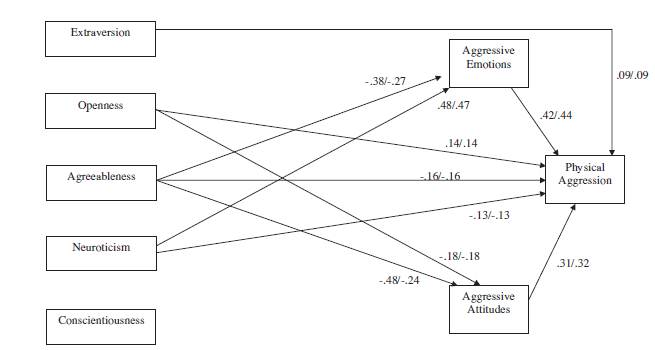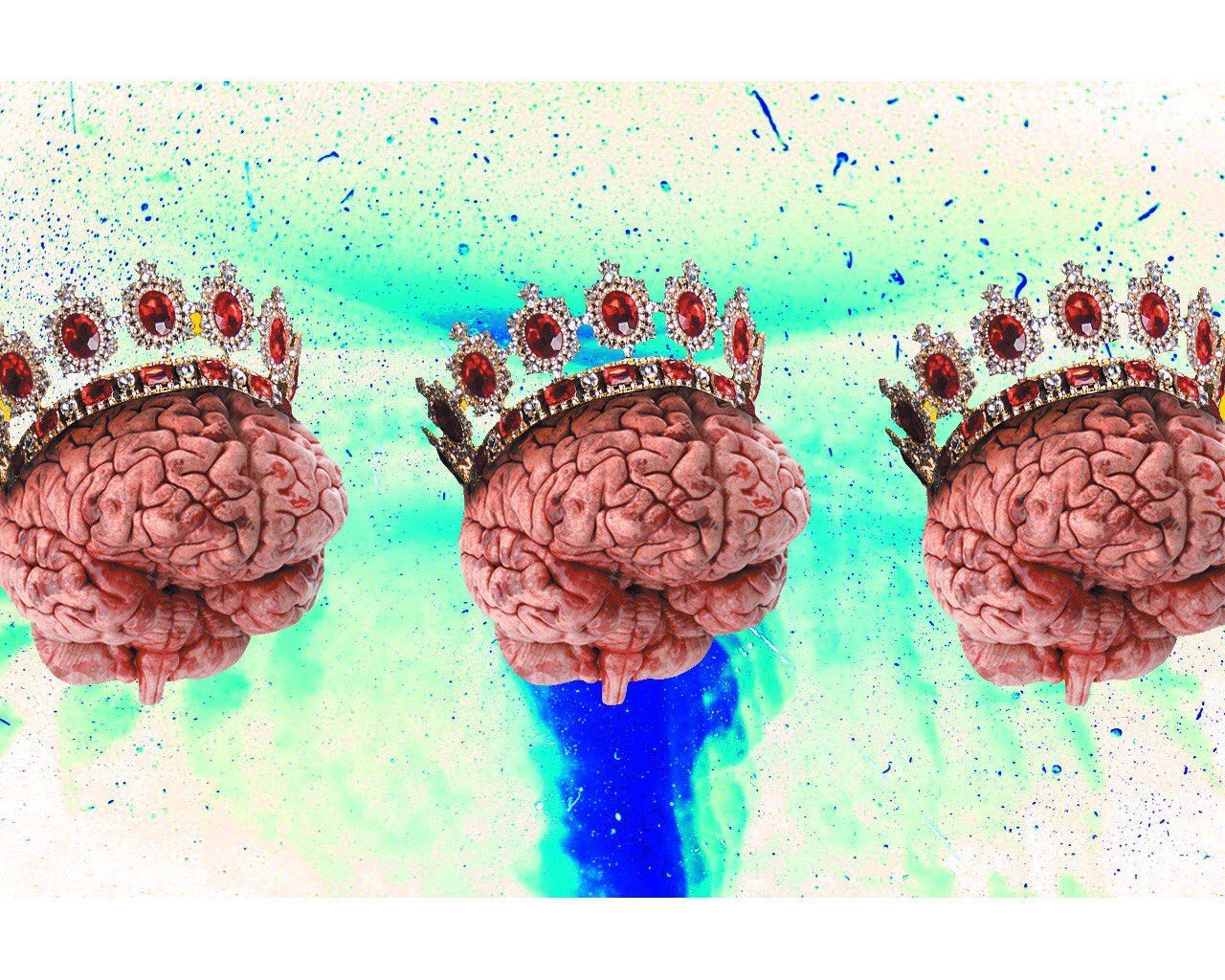Big 5 personality traits and agression
What do personality traits have to do with aggression

The big 5 personality traits are one of the most common, well understood, and cross culturally relevant measures of personality. So much so that its used in marketing and political campaigns (). With how much the concept is studied interesting findings emerge. The purpose of this article is to look at the relationship between the big 5 personality traits and aggression/violent behavior.
Looking at the research from Christopher P. Barlett and Craig A. Anderson, they show through their own study as well as a synthesis of other research that there are significant relationships between certain personality traits and aggressive behavior. As always, I will cite their research at the end which will include the sources they have cited as well as the measures and methods they used from other research. I’m mentioning this specifically because there is a long list of well-done research and measures, they include in their study that I want to show makes the validity of their findings substantial. Anyway, onto the research itself!
The research shows that aggressive behavior paths from the traits to behavior are determined by the type of aggressive behavior, and the trait measured. Openness and agreeableness were both directly and indirectly related to aggression but were indirectly related to violent behavior. neuroticism was both directly and indirectly related to physical aggression but not violent behavior. its important to note here that physical aggression is defined as hitting, whereas violent behavior is defined as hitting with a weapon, the level of severity and added cognition being the differentiating factor (impulsively hitting as opposed to finding a weapon and still wanting to use it to inflict harm).
Agreeableness: the strongest big 5 predictor of aggressive behavior. typically recognized as good-natured, trustful, cooperative is NEGATIVELY correlated to aggressive behavior. to put it simply the LESS agreeable you are the more likely you are to be aggressive both indirectly and directly. Showing a direct path to physical aggression. With direct pathways to aggressive emotions and attitudes which indirectly leads to physical aggression (direct & indirect).
Conscientiousness: recognized as being responsible, orderly, and dependable, is negatively related to aggression. Less of this trait means more aggression again. This trait being the least likely to have aggressive traits.
Neuroticism: recognized as easy to upset, emotionally unstable is POSITIVELY correlated to aggressive behavior. the more neurotic the more aggressive. With a direct relationship to physical aggression, and aggressive emotions. And indirectly from aggressive emotions to physical aggression.
Openness: recognized as being intellectual, polished, and independent tends to be unrelated to aggressive behavior.
Extroversion: recognized as being talkative, assertive, and energetic, has mixed results in the relationship with aggression. Some research shows relationships and some shows none. This study showed a minor relationship to physical aggression which could be explained by the situations affect on the trait.
If you’re looking at the picture above and thinking “I see connections from things that I thought didn’t show a relationship.” Let me explain simply not a significant relationship. The measures for conscientiousness aren’t shown because they are so minimal, openness is also a small and minor relationship as well as extroversion as I already mentioned. The larger numbers of neuroticism, agreeableness are the main traits related to aggressive behavior.
The research also showed that agreeableness and conscientiousness are both negatively related to vengefulness, but neuroticism is positively related to vengefulness. Narcissism is positively related to anger and hostility whereas extroversion, agreeableness, and conscientiousness are negatively related to these emotions.
It’s unclear whether the different paths to aggressive behavior are similar or different across the 5 traits. Some traits may only have a direct connection while others maybe only be indirectly correlated to aggressive behavior. agreeableness seems to have a stronger connection for physical aggression than violence. This is mostly due to violence being harder to predict and my opinion that violence would require anger over time with cognition to find a weapon while still maintaining intent to due harm which most people would recognize as wrong before they get that far or have calmed down before getting to that point. Again, violence is harder to predict.
In conclusion, direct or indirect, results showed big 5 traits are related to aggressive behavior. individual risk factors can combine additively or interactively with situational cues in relation to the traits expression of aggressiveness. However, the main point to note is that personality dispositions of individuals will be related to developing aggressive personality depending on the specific big 5 trait. In hostile situations a disagreeable person will be more likely to notice aggressive cues and react to them and then reinforce the aggressive trait. Its important to understand these traits and their relationship to the possibility of aggressive behavior. Also, keep in mind the situation also plays an important role in provocation. 9/10 times aggression doesn’t come out of nowhere whether it be internal conflict or external provocation. Further, teaching agreeableness and/or conscientiousness should cause a noticeable reduction in aggressive behavior. Look at the descriptions of the traits up above, embrace them and reduce the potential for aggressive behavior!
Jake O, the mastermind behind Psycho-social.com, connoisseur of the human mind armed with a psychology degree from Oregon State University (Go Beavs!), bringing you insights into the enigmatic realm of the psyche.
Share down below & Subscribe to get updates
Source
Barlett, C. P., & Anderson, C. A. (2012). Direct and indirect relations between the big 5 personality traits and aggressive and violent behavior. Personality and Individual Differences, 52(8), 870–875. https://doi.org/10.1016/j.paid.2012.01.029










